LGBTQ+ RESOURCES
Hope on the other side: How Rainbow Railroad rescues LGBTQI+ people at risk around the world
As anti-LGBTQI+ violence intensifies worldwide, Latoya Nugent explains why Rainbow Railroad’s work has never been more critical or more personal.
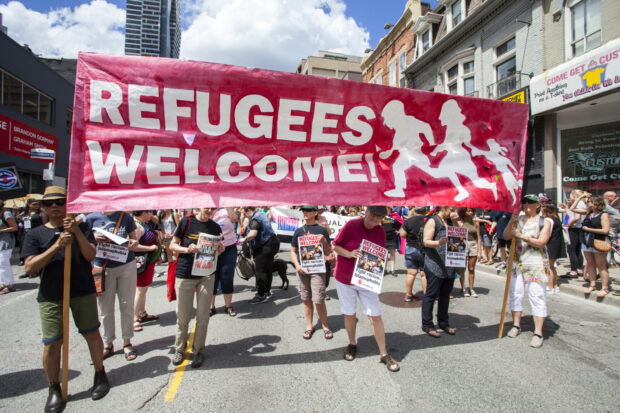
In a world and at a point where LGBTQI+ rights are under increasing threat, organizations like Rainbow Railroad are delivering life-saving action and offering hope as they do. Founded in 2006 as a grassroots response to the grave needs of LGBTQI+ individuals facing persecution, Rainbow Railroad has evolved into a global leader in queer humanitarian response. Their mission is clear and critical – to help LGBTQI+ people escape life-threatening situations and access the safety and freedom they deserve.
The Blade was honored to speak with Latoya Nugent, Head of Engagement at Rainbow Railroad, a determined advocate and strategist who brings lived experience, passion, and vision to this work. In our conversation, Latoya sheds much-needed light on the evolution of the LGBTQI+ refugee crisis, the organization’s global impact, and how everyday people can get proactive in supporting LGBTQI+ asylum seekers and those displaced.
Can you share with us a little bit about Rainbow Railroad and how it was formed?
Rainbow Railroad is a global non-profit organization with offices in New York and Toronto. We were founded in 2006 as a volunteer-led initiative focused on helping LGBTQI+ people at risk find safety. Our primary work supports individuals living in what we call “countries of criminalization” – places where it’s illegal to be LGBTQI+.
We officially registered as a charity in Canada in 2013 and received 501(c)(3) status in the U.S. in 2015. Since then, we’ve grown to a team of about 60 staff working across direct service and advocacy. Our mission is to ensure LGBTQI+ people in danger can access safety and support, while also driving global advocacy to improve conditions on the ground.
How did Rainbow Railroad come to play such an impactful global role in the LGBTQI+ refugee movement?
Largely because there simply weren’t many organizations doing this work. While humanitarian protection has existed for decades, very few have focused specifically on how forced displacement affects LGBTQI+ people. The persecution faced by our community is often deeply personal and not adequately understood or addressed in global protection systems.
Rainbow Railroad was founded by a group of lawyers in Toronto who witnessed extreme anti-LGBTQI+ violence in Jamaica and the broader Caribbean. They knew a solution was needed to create safe passage for those fleeing persecution. What started as a small initiative has now become a global force, responding to crises like the fall of Kabul, the Chechnya purge in 2017, and the Anti-Homosexuality Act in Uganda.
Because we’ve worked so closely with governments, especially the Canadian government, and have deepened our involvement in global coalitions, our ability to respond at scale has expanded. In 2023, we secured a historic partnership with the Canadian government to provide comprehensive, end-to-end relocation support for LGBTQI+ people. That had never existed before within the humanitarian protection framework.
How has anti-LGBTQI+ and anti-trans persecution evolved or intensified in recent years?
We’re seeing a rising, coordinated global movement against LGBTQI+ rights, heavily influenced by some religious and political groups. Alarmingly, some countries that had previously decriminalized LGBTQI+ identities are now reversing progress. Take Trinidad and Tobago, for example.
In 2023, Russia labeled the LGBTQI+ movement as “extremist.” In the U.S., under the current administration, we’ve seen federal resources for LGBTQI+ individuals and organizations stripped away. Websites have removed key information, and funding has been cut.
Globally, trans people are often the first targets, whether through state violence or community aggression. While we saw real progress for a while, a lot of that is now under threat. The movement today is focused on holding the line and preventing further erosion of rights.
What are some of the biggest misconceptions the public holds about LGBTQI+ refugees and asylum seekers?
A major one is the misunderstanding of how deeply personal the persecution is. Even people working in humanitarian spaces sometimes don’t grasp how intimate and life-threatening the experience is for LGBTQI+ people.
Unlike those fleeing war or natural disasters, circumstances that the world is more conditioned to understand, LGBTQI+ asylum seekers are often met with disbelief. People question their identity, their trauma, and even their right to seek protection.
And because the system isn’t designed with us in mind, many are retraumatized throughout the process. There’s also a lack of data. No one is formally tracking how many displaced people identify as LGBTQI+. So we’re forced to estimate based on global population models, but we believe there are upwards of 11 million LGBTQI+ individuals affected by displacement.
Also, the growing anti-immigrant sentiment worldwide paints refugees as threats, and LGBTQI+ asylum seekers get caught in that same narrative. Many wrongly believe that people choose to be refugees, but no one chooses this. It’s called forced displacement for a reason.
Here in the U.S., how does misinformation shape asylum policy?
Misinformation leads to policies that don’t reflect reality. If you start by distrusting asylum seekers, you miss their humanity. You see them as burdens or threats, not as people fleeing unimaginable violence.
As federal support gets cut, civil society organizations like Rainbow Railroad have to fill the gaps. But we’re not replacing a government system – we’re trying to patch a sinking ship.
And here’s the truth: LGBTQI+ asylum seekers will continue to arrive in the U.S. because it’s still safer than many of the countries they’re fleeing. Even with rising hostility here, they’re not being chased with machetes, like in parts of Nigeria, Jamaica, or Egypt. That’s the level of danger we’re talking about. And that needs to be understood.
In what ways does the U.S. resettlement system fall short for LGBTQI+ refugees?
Before the federal program we partnered with was suspended in January 2025, we saw firsthand how the system wasn’t built with LGBTQI+ people in mind.
Most LGBTQI+ individuals relocate alone, often fleeing their own families. Yet the resettlement system assumes people arrive with built-in support networks, which they don’t. That leaves them vulnerable to social isolation and instability from day one.
Making an asylum claim also requires proving you deserve protection, which can be incredibly retraumatizing. You’re forced to provide evidence of your identity and persecution—even when you’ve had to hide both for survival. If you can’t “prove” it, your claim may be denied.
Add language barriers, lack of culturally competent translators, and complex paperwork, and you’ve got a system that’s often inaccessible to the very people it’s meant to help.
Can you tell us about the Communities of Care program? What prompted its creation?
The program launched in 2023 as part of a federal initiative to support LGBTQI+ refugee resettlement in the U.S. We mobilized small groups of volunteers, five or more LGBTQI+ individuals or allies, to support refugees as they settled into their new communities. They helped with housing, employment, education, transportation, and creating a sense of belonging.
When the program was suspended in January, we transformed it. Now, it focuses on supporting asylum seekers already in the U.S., many of whom are struggling without federal support.
We call on three or more volunteers to form a Community Support Team and work with an LGBTQI+ asylum seeker for six months. We train these teams to offer trauma-informed, competent care. It’s a way to create chosen family and rebuild community.
Can you tell us about the Community Access Fund?
That fund directly responds to the reduction in U.S. federal support for displaced LGBTQI+ individuals. We realized that many small, grassroots organizations doing vital work are severely underfunded or entirely volunteer-run.
So we created a pool of funds that these organizations can apply to. The first grantee was actually founded by someone we helped relocate to New York a few years ago. He saw that there were countless LGBTQI+ asylum seekers in NYC without access to community or services and decided to create that support himself.
We’ve supported groups in cities like New York, LA, and D.C., and the impact has been powerful. The fund is all about redistributing resources to the people who need them and who are already doing the work on the ground.
What can the average U.S. citizen do to make a difference for LGBTQI+ asylum seekers and refugees?
So much! First, consider opening your home. Through our Rainbow Housing Drive, we ask people to offer a spare room or apartment at no cost, below-market, or even market rate, to someone in need.
You can also volunteer to form a Community Support Team with just two other people. Or donate to Rainbow Railroad. Honestly, even $5 helps. If everyone did that, the scale of what we could accomplish would be phenomenal.
We also encourage people to contact their elected officials at the city, state, or federal level. Let them know these issues matter to you. Support campaigns that uplift LGBTQI+ immigrants. Solidarity is powerful, and when we act together, we create real change.
This work can be heavy. As the Head of Engagement, how do you stay motivated?
Self-care is essential. Every morning, I wake up early and walk to work. It clears my mind. I take recovery seriously – emotional, physical, social, creative. Some evenings I turn my bathroom into a mini spa – candles, music, and a long bath. It grounds me.
But what really fuels me is my own journey. I’ve personally benefited from the work Rainbow Railroad does. I know how life-saving it is to be lifted from trauma and relocated somewhere you can truly live. Being part of gifting that to others drives me every day.
Our team is incredible. Resilient, dedicated, and deeply committed. And despite the challenges, we celebrate every win, no matter how small. Every life we help change matters.
Finally, what message of hope would you share with LGBTQI+ people who are fleeing persecution right now?
Hope is real, and it’s on the other side. There’s an entire global community, an army of people, who may not necessarily know your story, but who are bound together by our identities, understanding the persecution and discrimination that we as a community face. that knowledge makes us committed to doing everything in our power to ensure that everyone, every LGBTQI+ person, can live with not only dignity but also safety.
Trust that army to keep doing the work and to show up in solidarity. It may be difficult tomorrow or even next month, but there’s hope on the other side.
For more information, head to RainbowRailroad.org
California
San Diego Foundation opens up scholarship for California LGBTQ+ youth
‘We’re planning on going national in 2027’

The National Rainbow College Fund was launched as a new scholarship program through the San Diego Foundation aimed at supporting LGBTQ+ students across California whether they are openly out or not.
According to a survey conducted by Student Loan Hero, LGBTQ+ students face significant barriers in paying for their education. Families may not financially support LGBTQ+ students, leading many to turn to loans to finance their education. Students who also identify as people of color such as Latinx and Black students, are further pushed into debt by racial inequality as loan borrowers in academia.
According to an LGBTQ+ youth report by the Human Rights Campaign, only about 26 percent of youth are out to all of their family members.
Jeff Spitko, senior director for integrated fundraising at San Diego Foundation which powers National Rainbow College Fund spoke with L.A Blade regarding the new scholarship program.
“We have over 500 applications in draft mode and over 200 that have already been submitted, coming from over 320 different zipcodes from across California,” said Spitko. “So I think that what gets me most excited about this program is the ability we have to help LGBTQ+ youth across the state.”
This scholarship protects students from being outed throughout the entire process–from the application process, to the award being given.
“We want to make sure that students across California–and hopefully around the country over the next coming years–get the education they deserve and that they dream of, whether they are out and proud, or still have not had the opportunity or family support to come out,” said Spitko.
To apply, a student who identifies as LGBTQ+ whether publicly or privately, must be a high school senior; an incoming or current college or university student; or an adult re-entry student. The application is not currently open to graduate or Ph.D-level students, but the San Diego Foundation plans to extend the scholarship to those students in the future.
Applicants need to have lived in California for at least one year and must demonstrate financial need by completing the Free Application for Federal Student Aid, the California DREAM Act Application or the Federal Student Aid Estimator Tool. LGBTQ+ students must plan to enroll in at least 6 units in an accredited public or nonprofit community college; four-year university, trade, vocational school anywhere in the United States.
“As a student at UC San Diego, National Rainbow College Fund eased my financial burden and enabled me to focus on my studies. It also empowered me to be recognized as a person and to be accepted for who I am and as I am,” said Brayden Pape.
LGBTQ+ borrowers had a higher debt burden on average, with $16,000 more than their cisgender and heterosexual peers: 60 percent of LGBTQ+ student loan borrowers regret taking out student loans; 28 percent feel that they can’t manage their student loan payments and more than 53 percent reported earning less than $50,000 per year.
A 2022 study from the Williams Institute found that LGBTQ+ students are four times more likely than non-LGBTQ+ students to choose college in a state with a more welcoming climate and to live away from family; 60 percent of white LGBTQ+ students are not out to staff or faculty and less than 40 percent of LGBTQ+ students of color are out to staff or faculty. Community colleges have even higher rates of keeping sexual identity private: more than 70 percent white LGBTQ+ students and 65 percent LGBTQ+ students of color are not out.
The application is open now until Mar. 5.
For more details about eligibility and selection criteria, please visit the National Rainbow College Fund website.
AIDS and HIV
Local organization aims to support and assist Black LGBTQ+ community
REACH LA is stepping up their mission amid hostile administration
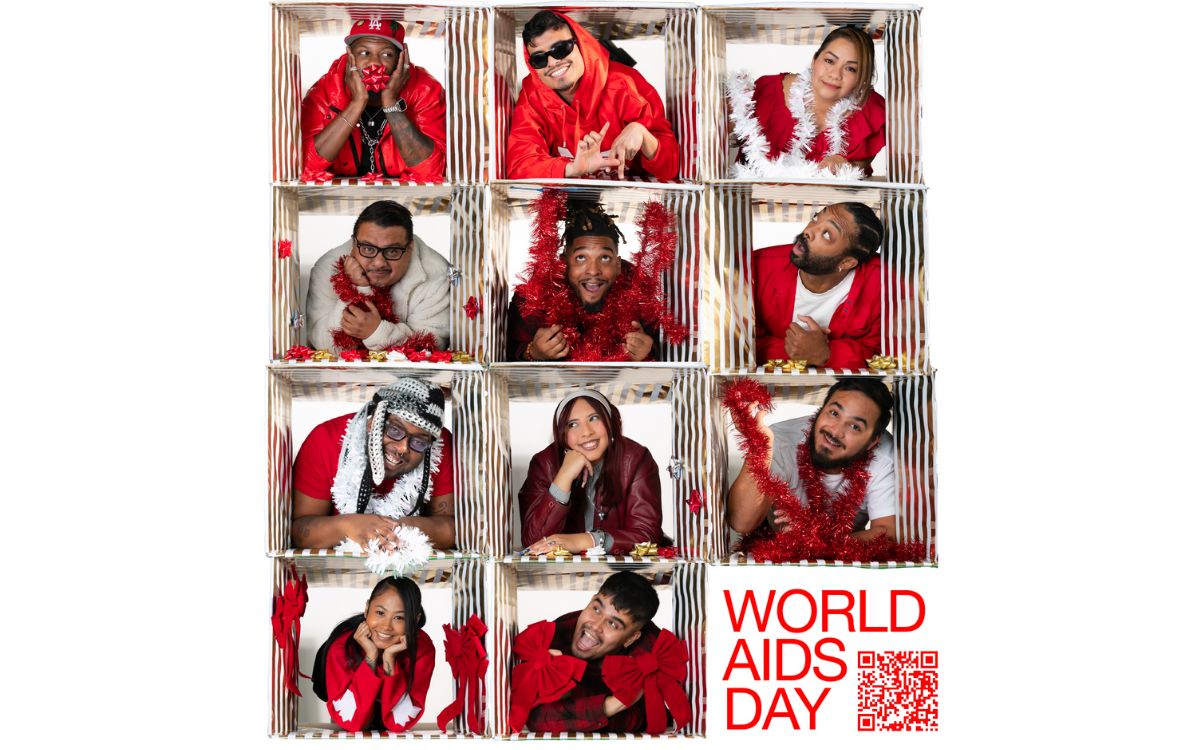
REACH LA, a Los Angeles-based nonprofit organization aimed at working with youth of color, is stepping up their prevention resources during Black History Month to support the LGBTQ+ community of color.
Though today is National Black HIV/AIDS Awareness Day, REACH LA works year-round to provide resources to their community members.
This month, the organization is amplifying its mission to support Black LGBTQ+ youth by offering free HIV testing and care throughout February, offering a $25 gift card as incentive to get tested. This and all of REACH LA’s efforts are geared toward assisting the marginalized Black and Latin American communities by reducing stigma, increasing education and assisting community members with resources.
The QTBIPOC community is especially vulnerable to political and personal attacks. As we head into the next four years under a hostile administration whose goal is to erase queer and trans people, there will be continued attacks on federal funding and on any other front possible.
“This year, it is especially vital, more than ever, to amplify and commemorate National Black HIV/AIDS Awareness Day. At REACH LA, we are currently engaging with individuals and partnerships while navigating through dire and uncertain times where HIV/AIDS awareness prevention efforts, access, and visibility have been under attack and restricted,” said Jeremiah Givens, chief marketing and communications officer at REACH LA.
It is important to spotlight the intersection between health equity, Black LGBTQ+ empowerment and community-based solutions during Black History Month and every other month throughout the year and especially during this particularly vulnerable time.
As one of eight CDC PACT Program Partners, REACH LA celebrates National Black HIV/AIDS Awareness Day with a Positive Living Campaign in collaboration with the CDC’s Let’s Stop HIV Together initiative. The campaign highlights the resilience of individuals living with HIV and works to raise awareness and foster community support.
To learn more about resources, visit their website or stop in for testing, support and other resources. The organization’s doors are open Monday through Friday, from 11 AM to 7 PM for free, on-site HIV testing and assistance with accessing PREP and PEP, linkage to care and free mental health therapy.
-

 a&e features4 days ago
a&e features4 days agoNia DaCosta and Tessa Thompson on the vital queer chaos of ‘Hedda’
-

 a&e features4 days ago
a&e features4 days agoJonathan Bennett: making ‘Finding Mr. Christmas’ Season 2 with heart, and telling gay love stories for broad audiences
-
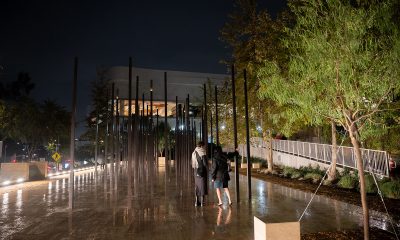
 West Hollywood3 days ago
West Hollywood3 days agoWest Hollywood kicks off community-focused programming for World AIDS Day
-
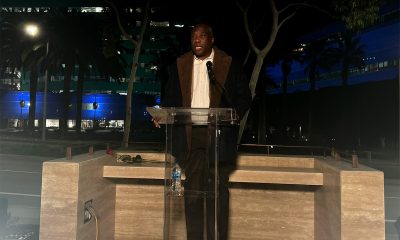
 West Hollywood2 days ago
West Hollywood2 days agoAdministration refused to honor World AIDS Day; residents gathered with defiance, grief and love
-

 Tarot Readings and Astrology4 days ago
Tarot Readings and Astrology4 days agoDecember is a time for reflection, celebration, and tying up loose karmic threads in Intuitive Shana’s December tarot reading
-
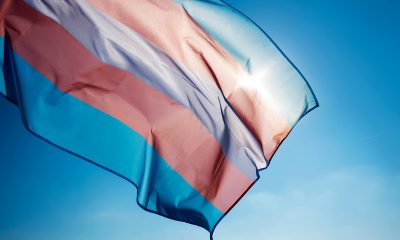
 National2 days ago
National2 days agoFaith leaders denounce anti-transgender attacks
-

 a&e features2 days ago
a&e features2 days agoExploring a different side of Los Angeles influencer Javonte Rose
-
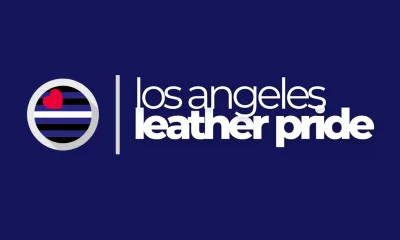
 Leather community4 days ago
Leather community4 days agoLeather, legacy, and a little lust: Celebrating 25 years of LA Leather Pride
-

 Features4 days ago
Features4 days agoWhere craft meets community: Inside Zion Liu’s and Christian Leon’s small biz ‘Here & Always’
-

 a&e features1 day ago
a&e features1 day agoDrag queen Kennedy Davenport dishes on her new comedy special
